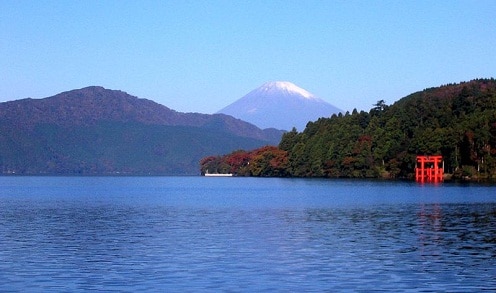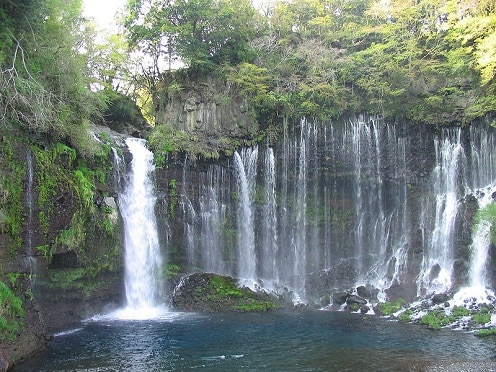El Hakone National Park it is a park located near Yamanashi and Shizuoka, and the prefectures of Kanagawa, and the west of the metropolis of Tokyo. This vast expanse brings together Mount Fuji, the Five Lakes, Hakone, the Izu Peninsula, and the Izu Islands.
Rather than being a specific point, the park is a collection of scattered tourist sites that dot the region. The southernmost point, Hachijojima Island, is several hundred kilometers from Mount Fuji.
The Park was created on February 2, 1936 as Fuji-Hakone National Park, and it is one of the first four national parks established in Japan. In 1950, the Izu Islands were added to the park, and its name changed to its current designation. Due to its proximity to the metropolis of Tokyo and the ease of transportation, it is the most visited national park in all of Japan, with the number of visitors a year exceeding 100 million dollars.
Among its attractions is Shiraito falls , which is a waterfall in Shizuoka prefecture, near Mount Fuji. It is part of the Park and has been protected since 1936 as a Japanese Natural Monument. The falls were considered sacred in Fuji worship. Another waterfall, the Otodome Falls is about five minutes away.
It also highlights the Tanuki Lake. It is a lake near Mount Fuji, Japan. It is located in Fujinomiya, Shizuoka prefecture, and it is a swampy area. The lake was created in 1935 by diverting the waters of the nearby Shiba River to create a reservoir for use in irrigation. The lake is now a popular vacation spot, with sites for camping, fishing, boating and is known for its views of Mount Fuji.
Equally attractive to the visitor is the Hakone Wetland Botanical Garden. It is a botanical garden founded in 1976, and now contains some varieties of plants from 1700, including about 200 types of wood and herbaceous plants from the wetlands of Japan, as well as 1300 varieties (120 species) of alpine plants. Collections include Habenaria, Hemerocallis, Iris, Lilium, Lysichitum, and Primula, in addition to deciduous trees, such as Acer, Cornus, and Quercus.

